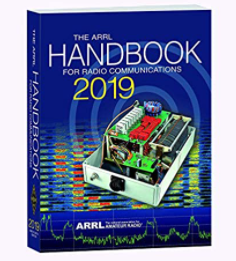- Are you looking for practical antenna book ?
- tired reading theory from other books and literature
- are you looking for antenna books that can implemented for your business , companies, and hobbyist ?
Now you can get the practical antenna books in here from the practical electronics engineer/antennA Hobbyist that have more 35 years experienced in antenna field/ master and guru in antenna field
joseph j. carr
BEST HANDBOOK FOR UNDERSTANDING PRACTICAL ANTENNA - ORDER IT NOW
Practical Antenna HandBook 5/e 5th Edition - This Book is a practical antenna handbook ,by Joseph J. Carr , a book that explains antennas in terms of theory and practical examples to apply, suitable for Hobbyist, Students, and DIYers. Practical Antenna Handbook is a thick volume that tries - mostly successfully - to balance technical detail against practicality.
The most popular book on antennas ever written and unquestionably the world's favorite antenna book, Joseph J. Carr's Practical Antenna Handbook, fourth Edition and Fifth Edition.
Joseph J. Carr
Is was a military electronics technician and the author of several popular electronics books, including McGraw-Hill’s Secrets of RF Design, Third Edition and Old Time Radios! Restoration and Repair. He wrote a monthly column for Nuts & Volts magazine.
George W. (Bud) Hippisley,
Is W2RU, earned
his BSEE degree from MIT, and was formerly chief operating officer for a
major supplier of electronics to the cable TV industry. A long-time
active amateur radio operator who has won or ranked nationally in many
competitive on-the-air operating events, he has given talks on the
basics of antennas and ionospheric propagation to radio clubs and other
groups for more than 35 years.
Several article from Practical Antenna Handbook you can find in this blog, and this This
intended to let the reader knows the contents of this book, this book
combines theory and practice very well and clearly, suitable for
hobbyists, scientists, college students, or anyone interested in antenna
In this book you
will learn about Introduction to radio communication, radio wave
propagation, Antenna Basics , dipole antenna, standing waves antenna,
transmission lines, impedance matching, Antenna Arrays, Antenna Gains,
High frequency Antennas, Wire Loop Antennas, Multiband Antenna , Tune
able Antenna, Wire Antenna, Yagi Uda Antenna, Microwave Antenna, Mobile
Antenna, Marine Antenna, VHF Antenna, UHF Antenna, Smith Chart, Antenna
Software , Tower Antenna and etc.
The
ARRL Antenna Book for Radio Communications has everything you need to
design your own complete antenna system. Since 1939, it has maintained
its place at the forefront of Amateur Radio technology a single resource
covering antenna theory, design and construction, and practical
treatments and projects. In this edition, The ARRL Antenna Book
describes hundreds of antenna designs: wire, vertical, portable and
mobile, and new high-performance VHF/UHF Yagi designs.
Radio
amateurs continue to make contributions to the state of the art in
antenna design and construction. The available tools have grown in
sophistication by leaps
and bounds over the past years.
Antenna modeling with the low-cost or free programs available to
amateurs has completely changed antenna design and development.
A large set of antenna models designed for use with EZNEC 6.0 demo software is included.
Updated
to reflect the latest advances and technologies, this 23rd edition is
full of antenna designs pioneered by dozens of radio amateurs:
New
Projects: Multiband HF antennas from 160 through 10 meters, A simple
omnidirectional satellite antenna system, More popular Moxon antenna
projects on CD-ROM,
Stealthy and portable antenna designs for home and away.
Radio
Experimentation, Discovery, and Achievement. The ARRL Handbook for
Radio Communications is a complete reference and guide to radio
technology principles and practices. Since 1926, The ARRL Handbook has
been a trustworthy source of introductory, applied, and theoretical
information.
Now in its 96th edition The
Handbook continues to advance the pursuit of experimentation and
innovation by radio amateurs and professionals. Each edition contains
new and useful material to support Amateur Radio activity from the
traditional short- and long-wave frequencies through microwaves! Key
Topics Radio electronics theory and principles Circuit design and
equipment Radio signal transmission and propagation Digital and analog
modulation and protocols Antennas and transmission lines Construction
practices.
Who reads The Handbook? Amateur
Radio operators, or hams; professional wireless communication engineers
and system designers; electrical engineers; students and instructors of
engineering, physics, and geoscience.
Always
Updated! New Projects and Content Simple SLA Float Charger project by
John Boal, K9JEB Amateur Radio Data Platforms by Paul Verhage, KD4STH
and Bill Brown, WB8ELK The latest information on WSJT-X digital modes by
the WSJT team Filter and circuit design software by Tonne Software and
Jim Tonne, W4ENE Low-Noise VHF and UHF Oscillators by Ulrich Rohde,
N1UL, and Ajay Poddar, AC2KG Update on Solar Cycle 24 by Carl
Luetzelschwab, K9LA Updated SSTV practices and technology by Larry
Peterson, WA9TT.
Designing dual-band loaded
dipoles by David Birnbaum, K2LYV Latest transceiver survey by Joel
Hallas, W1ZR Plus, new component tables, reference articles, material
characteristics, and guidelines for SDR design. Download Included: eBook
and Supplemental Material Download the fully searchable digital edition
of the printed book, as well as expanded supplemental content,
software, PC board templates, and other support files.



